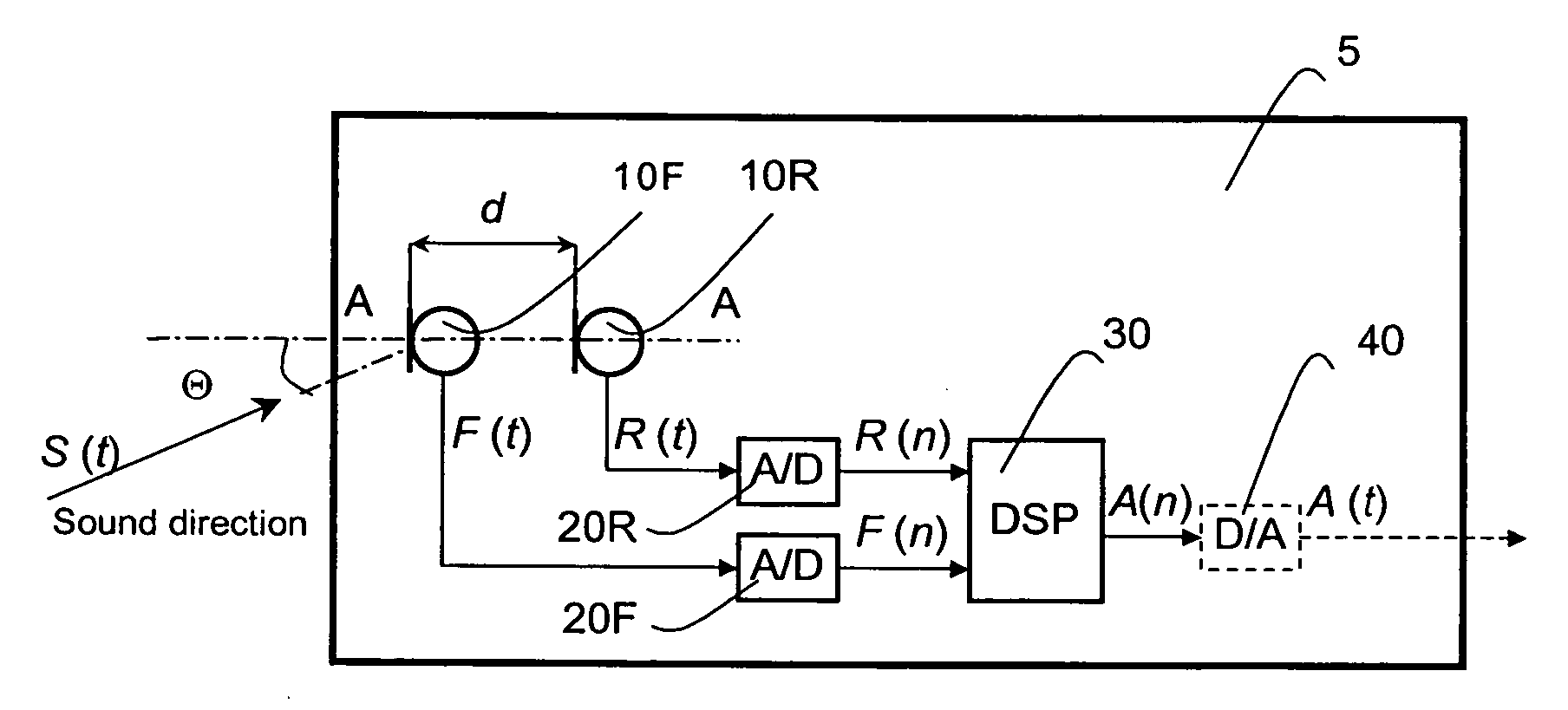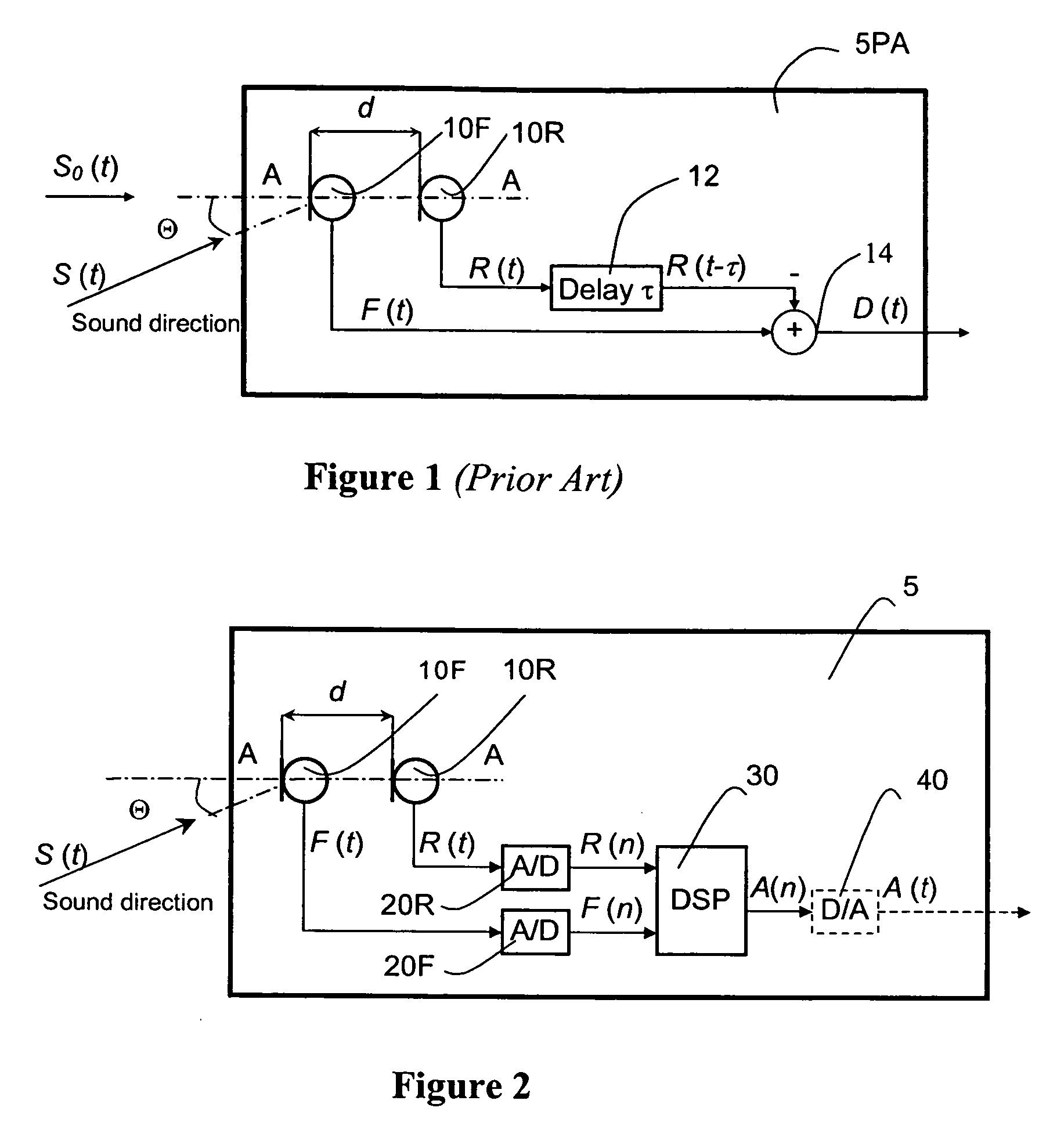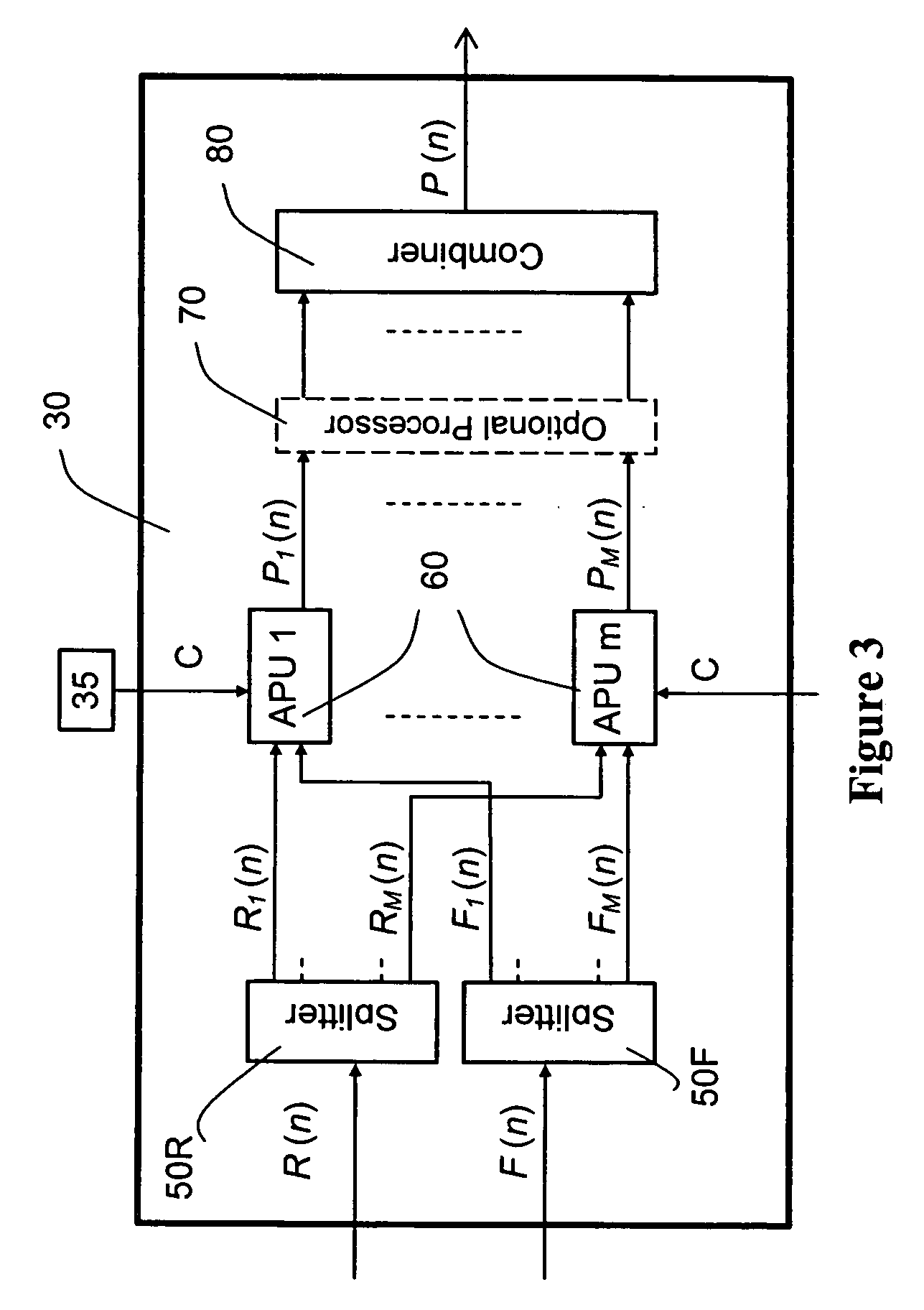Method and system for reduction of noise in microphone signals
- Summary
- Abstract
- Description
- Claims
- Application Information
AI Technical Summary
Benefits of technology
Problems solved by technology
Method used
Image
Examples
Embodiment Construction
[0070]FIG. 2 shows the general scheme of the first embodiment of the noise reduction system according to the invention. The system of the invention is implemented as an improved autodirective dual microphone system of the general type shown in FIG. 1. Similarly to the prior art system, the proposed autodirective dual microphone system comprises two spatially distant microphones 10, a front microphone 10F and a rear microphone 10R.
[0071] The front microphone 10F and the rear microphone 10R are connected correspondingly to a front input channel and a rear input channel, each of said channels being represented by an analog-to-digital converter (ADC) 20F, 20R. When the microphones 10F, 10R receive acoustic signals, they correspondingly produce, in response to sound pressure changes, a front microphone signal F(t) and a rear microphone signal R(t), said signals F(t), R(t) being continuous analog electric signals. On receiving signals F(t), R(t), the analog-to-digital converters 20F, 20R...
PUM
 Login to View More
Login to View More Abstract
Description
Claims
Application Information
 Login to View More
Login to View More - R&D
- Intellectual Property
- Life Sciences
- Materials
- Tech Scout
- Unparalleled Data Quality
- Higher Quality Content
- 60% Fewer Hallucinations
Browse by: Latest US Patents, China's latest patents, Technical Efficacy Thesaurus, Application Domain, Technology Topic, Popular Technical Reports.
© 2025 PatSnap. All rights reserved.Legal|Privacy policy|Modern Slavery Act Transparency Statement|Sitemap|About US| Contact US: help@patsnap.com



